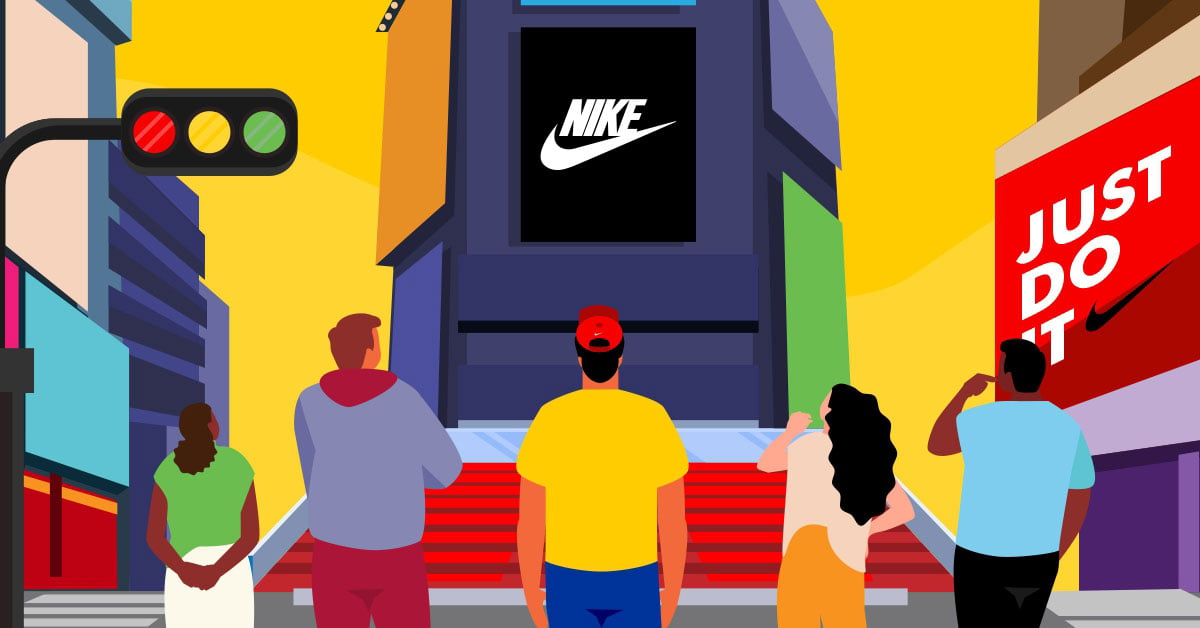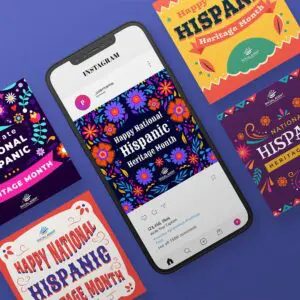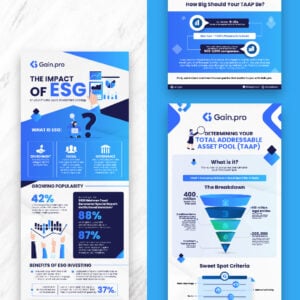
Looking at Nike’s excellent marketing strategies, you’ll discover its secret sauce: its ability to tug at its audience’s heartstrings. The sports apparel giant genuinely understands its users’ pain points and crafts against-all-odds marketing campaigns. Hence, it can face negative publicity with a strong stance (remember the Colin Kaepernick campaign?) and still enjoy a 38.23% total market share. Here are eight techniques to take a leaf out of Nike’s advertising prowess.
Table of Contents
- What is Nike’s marketing strategy?
- Target Audience Segmentation
- Not Overselling the Products
- A Focus on Pain Points
- Emotional Marketing
- Working with Celebrities and Influencers
- Purpose-Driven Marketing (Social Responsibility)
- Community Building and Engagement
- Product Design and Technology Innovation
- Who is Nike’s target audience?
What is Nike’s marketing strategy?
Nike’s marketing tactic leverages the four Ps—product, price, promotion, and place. While these elements are fundamental in every marketing strategy, Nike understands how to gain an advantage. The brand uses a good combination of these components to lure more potential leads.
- Price – Nike products come at premium prices. However, customers still aren’t bothered by this because Nike knows how to position their products which emphasizes the benefits. And for consumers, this is essential.
- Product – You can’t deny that Nike products are high-quality and aesthetically unique compared to other footwear brands. And Nike takes pride in maintaining this reputation regarding its footwear.
- Promotion – Nike’s marketing efforts are carefully created to target a particular group of people, even with varying demographics and psychographics.
- Place – The brand also leverages third-party resellers and retailers to skyrocket sales. However, the brand diversifies its selling channels, such as online stores and physical locations.
Nike’s marketing strategy isn’t a tough nut to crack. Binge on a couple of your favorite Nike advertisements, and you’ll see there are common denominators you can quickly pinpoint. But here’s what you can learn from the Nike marketing strategy:
1. Target Audience Segmentation


A golden rule in marketing is to define your target audience clearly. Once you’ve narrowed down your target audience, you can classify them into groups. This way, advertisers can experiment with their marketing campaigns. Nike’s target market is diverse, making its reach extensive. The brand identifies its target audience through demographics, psychographics, behavior, and location.
Segmentation is advantageous if you’re diversifying your advertising efforts. You’ll know how to use specific campaigns that sit well with a particular group. This way, budget, time, and effort won’t go to waste.
2. Not Overselling the Products


If you gather your favorite Nike advertisements, you’ll notice that the brand doesn’t put its products in the limelight. Most of the highlights in their videos are pointed toward the athletes’ or people’s struggles. They create a good storyline that everyone can relate to. Regardless of your status, the struggles are vague enough to instill relevance within Nike’s target audience. However, these struggles are also identified carefully so the audience can put themselves into the athlete’s shoes.
For example, Nike targets mothers who juggle taking care of children and regular training. The struggle itself relates to all mothers who have a lot on their plate. However, Nike identifies mothers who are into an active and healthy lifestyle.
3. A Focus on Pain Points


Another rudimentary element in Nike’s advertising strategy is its focus on its target audience’s pain points. Nike’s vision for its users is geared toward achievement and triumph in their lives. Unfortunately, we all know this win can come with many hurdles along the way. Successful athletes stood on podiums because of their hard work and determination.
But what the public eye doesn’t see is the struggles behind the success. Nike emphasizes this so potential customers can relate to the brand and its vision. In turn, it gives them a sense of inclination toward a brand that understands their daily pain points.
4. Emotional Marketing


If you look at some of Nike’s video advertisements, you can’t help but shed a tear or two. Any advertiser can attest to how Nike leverages emotional appeal to tug at their audience’s heartstrings. Every video and still advertisement has a gist behind its creation, which the viewers can learn from.
Relevance is significant in advertising, and Nike integrates this element into its marketing campaigns. Relevance in messaging and visuals is the primary reason why Nike’s advertising methods reel in more customers.
5. Working with Celebrities and Influencers


Nike’s marketing strategy also relies on celebrities, influencers, and athletes. The brand supports popular and unpopular athletes who have motivational stories and journeys to share. Working with people who have been on the same road will make brand communication stronger. This is because people look up to others who can rise amidst the struggles in their lives.
6. Purpose-Driven Marketing (Social Responsibility)


Thanks to its influence and reputation, Nike has the bravado to stand on social issues, which helps it connect deeply with consumers who share the same values. This strategy goes beyond selling its products; it fosters emotional investment and loyalty from its audience, solidifying Nike’s position as a symbol of change and empowerment.
7. Community Building and Engagement


Nike’s various platforms help it create communities that keep its customers loyal and engaged. The Nike Run Club and Nike Training Club encourage using Nike products while promoting a sense of deeper connection. They also foster long-term customer retention via shared fitness journeys.
8. Product Design and Technology Innovation


With a never-ending focus on product innovation, Nike has perfected the art of differentiation. Introducing cutting-edge tech such as Nike Flyknit or using eco-friendly materials has kept the brand relevant to tech-savvy and performance-oriented consumers, reinforcing its leadership in the sportswear industry.
Who is Nike’s target audience?
Nike segments its target audience into four parts:
- Demographic
- Psychographic
- Behavioral
- Geographical
The demographic segment of Nike’s target audience range between 15 and 40 year-olds. The brand primarily targets teens who look up to famous and successful athletes. Nike also targets the middle-aged group to extend its popularity to the younger generation. For example, a 40-year-old mother into volleyball can influence her children to maintain an active lifestyle.
Nike selects people who understand and aim for an active lifestyle in psychographics segmentation. The brand’s audience revolves around anyone who has a body and wants to be an athlete. For Nike, if you have a body, then you’re an athlete. Also, if you’re constantly thinking about sports, watching sports, or doing sports, you belong to Nike’s target market.
Additionally, behavioral segmentation pertains to how Nike makes its target audience feel. Nike reminds users that it’s not about how its products make you look. But it’s all about how Nike products make you feel as an athlete.
Finally, Nike dwells on geographical location because sports vary by location. For instance, Nike can’t market to football players in India, Finland, or the Philippines because this sport isn’t as popular compared to the popularity of football in Mexico, England, or Australia.
The bottom line
Nike is a leader in marketing, and for a good reason. They never fail to take notice of their audience’s pain points and offer an inspiring solution that keeps customers for life. Aside from creating emotional videos that pack a punch, Nike’s still ads are equally riveting. Nike’s advertising graphics speak the message directly and clearly. If you want to succeed in online and offline marketing, creating compelling visuals is key for higher engagement, awareness, and conversions.
Do you need advertising designs for your brand? Sign up for Penji’s 30-day money-back guarantee and request your first ad design. You’d be surprised how quick, easy, and affordable unlimited graphic design is!
About the author
Table of Contents
- What is Nike’s marketing strategy?
- 1. Target Audience Segmentation
- 2. Not Overselling the Products
- 3. A Focus on Pain Points
- 4. Emotional Marketing
- 5. Working with Celebrities and Influencers
- 6. Purpose-Driven Marketing (Social Responsibility)
- 7. Community Building and Engagement
- 8. Product Design and Technology Innovation
- Who is Nike’s target audience?
- The bottom line






















